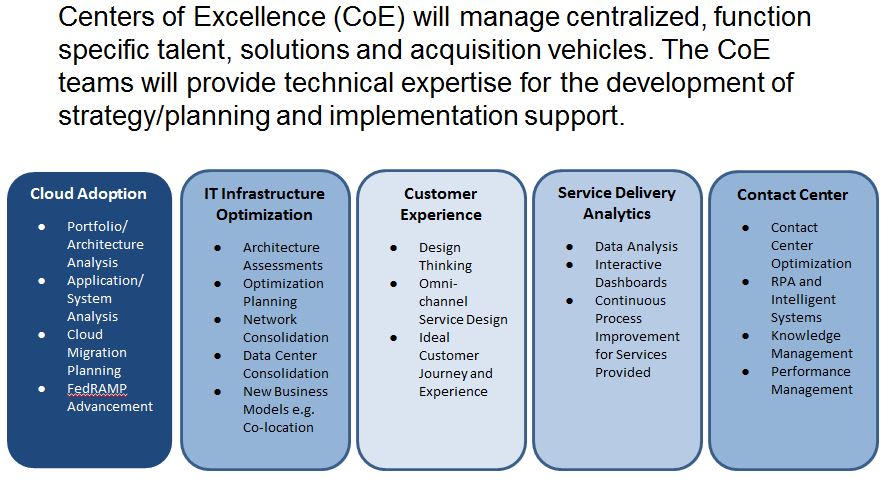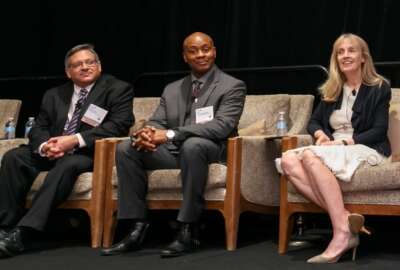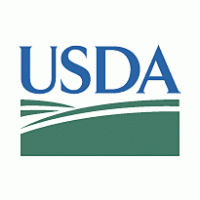
USDA, GSA to award 8 IT modernization contracts by end of fiscal 2018
GSA and USDA ask for vendor feedback on initial plans for phase 2 of the IT modernization centers of excellence strategy.
The Trump administration added another piece to its IT modernization puzzle by detailing what phase two of the Centers of Excellence initiative will look like at the Agriculture Department.
USDA, the pilot agency for the CoE effort, and the General Services Administration outlined their initial thinking around the five focus areas of IT modernization that will move the initiative from planning to implementation. The five focus areas are:
- Cloud adoption
- IT infrastructure optimization
- Customer experience
- Service delivery analytics
- Contact centers
“Our focus is how to do we put the manpower and partner with industry to actually make progress in these areas,” said Joanne Collins-Smee, the director of GSA’s Technology Transformation Service and deputy commissioner of the Federal Acquisition Service, at the phase 2 industry day in Washington, D.C. “During this last 6-month journey, it was about how do we stand up the teams in each of these five areas. We have put in expertise and process, and are partnering with industry to use what has been done in industry and pull that into the public sector.”
The White House announced the CoE strategy and USDA as the first pilot in December. GSA made awards to four vendors in March under phase 1 for the discovery and planning of USDA’s IT modernization strategy.

But it’s under phase 2 where the real work gets a boost, and industry and other potential agency participants in the CoE initiative will get a sense of what this all entails.
“This will serve as a model for modernizing other agencies. I can assure you that they are clamoring at the door to get in to this project. There is an enormous amount of interest in this,” said Matt Lira, special assistant to the president for Innovation Policy and Initiatives in the Office of American Innovation. “This is really about collaboration and partnerships. This is a model about how do we work together to get things done and how do to align incentives by bringing the best of public and private sectors working together to achieve these outcomes over a long term basis.”
While neither Lira nor Collins-Smee would offer any insight into which other agencies are interested in following in USDA’s footsteps, the administration expects many to do so.
Under phase 2, USDA and GSA will begin issuing solicitations in July with awards expected by late-September.
The industry day Wednesday as well as the reverse industry days Thursday and Friday will help USDA and GSA further refine the requests for proposals.
Al Munoz, the GSA contracting officer for the CoE effort, said the scope of work for all five areas still is very much tentative, which is unusual as by the time most agencies hold a vendor day, the strategy is more solid.
“Everything is on the table as far as vendors and ideas,” he said. “We want to cast a wide net where there is the highest concentration of quality vendors.”
Under phase 1, Gary Washington, the USDA chief information officer, said the agency found few surprises in the analysis of its challenges and opportunities. He said because so much IT modernization work was ongoing before the CoE initiative launched, phase 1 efforts helped reinforced some existing areas on which to focus.
For instance, USDA already planned to close 37 data centers in 2018 and 2019, but will reach that goal much quicker now.
From there, USDA continued to look at its more than 1,100 applications it uses and determine which ones are ready for the cloud, which ones will need more work, and then it will prioritize the top 100 apps to move to the cloud.
“Around cloud adoption, we’ve helped USDA define the appropriate role of its Cloud Platform Services (CPS) office,” said Bob DeLuca, GSA’s director of the Centers of Excellence office. “Prior to bringing this team together, USDA offices had to go through a different group to obtain cloud services, and it was harder for the technology person to know who to talk to about cloud. Now the CPS is the organization with cloud and infrastructure so there is a one-stop shop to get to cloud.”
DeLuca added that the CoE office also worked with USDA’s chief information security officer’s staff to create an accelerated authority to operate process for cloud services. He said the new one is less costly and will take shorter time frame to get approvals.
Latest Technology News
The phase 1 analysis also is leading USDA to develop two solicitations for data analysis and visualization tools, and for training.
“We want you to come up with tools that help mission areas deliver on strategic goals. The tools that we are looking for are things like dashboards, predictive analytics, advanced geospatial tools, really anything to help USDA deliver on the strategic goals of Secretary Sonny Perdue,” said Tom Hallaran, the data analytics CoE lead. “We also want to build the capacity in the building so we will need a vendor to work closely with USDA to leverage better tools and take advantage of analytical processes to make USDA the foremost data driven organization in government.”
Munoz said as of now the acquisition strategy for each of the five areas are similar. GSA plans to issue task orders or even blanket purchase agreements against either the Schedule 70, VETS 2 or the Alliant 2 unrestricted or small business governmentwide acquisition contracts for the cloud/infrastructure, data analysis, customer experience/voice of the customer CoEs.
Munoz said GSA also is leaning toward using the Professional Services Schedule for CoEs for customer experience, program management services and data analytics. In all, GSA and USDA could award as many as eight contracts under phase 2 of the CoE initiative.
He said the contact center CoE will be a single award using the full-and-open competition.
Washington said the delays in awarding the phase 1 contracts didn’t impact USDA’s plans or timing for phase 2. Over the next few weeks, GSA and USDA will refine the solicitations based on the industry day and reverse industry day feedback, and then begin the acquisition process for phase 2.
“We want to hear what we are doing wrong, what we are doing right, if the vehicles we are using are the right ones or the wrong ones, if we have forgotten something. We want to hear from you so we can incorporate all of that stuff into the requirements,” DeLuca said. “I’m looking to get a lot from you. We have a difficult decision ahead of us in September to evaluate all the bids. If I get $1 million and $50 million bids for the same RFP, then I’ve failed you.”
Copyright © 2025 Federal News Network. All rights reserved. This website is not intended for users located within the European Economic Area.
Jason Miller is executive editor of Federal News Network and directs news coverage on the people, policy and programs of the federal government.
Follow @jmillerWFED






